Abstract
Trypsin in duodenal aspirate and pure pancreatic juice samples has been measured by both radioimmunoassay and enzymatic mathods. The radioimmunossay has been shown to be specific and to detect trypsin in the presence of aprotinin (Trasylol). In duodenal juice samples from control subjects and from patients with primary biliary cirrhosis a good correlation was obtained between both immunoreactive trypsin concentration and trypsin activity. The immunoreactive trypsinogen concentration in pure pancreatic juice also correlated well with activated trypsin activity. The mean immunoreactive trypsin concentration and the concentration of enzymatically inert immunoreactive trypsin in duodenal juice samples from patients with primary biliary cirrhosis were significantly lower than controls, suggesting pancreatic hyposecretion in this disease. After five duodenal juice samples had been stored for three months at -70 degrees C, immunoreactive trypsin concentration in samples stored without Trasylol were reduced by 12 . 0 +/- 4 . 2 (mean +/- SD) times the concentration of samples stored in Trasylol. Trypsin autodegradation continues even at -70 degrees C; Trasylol protects against this. Radioimmunoassay is a reliable method of trypsin estimation in duodenal juice and has advantages over conventional enzymatic analysis.
Full text
PDF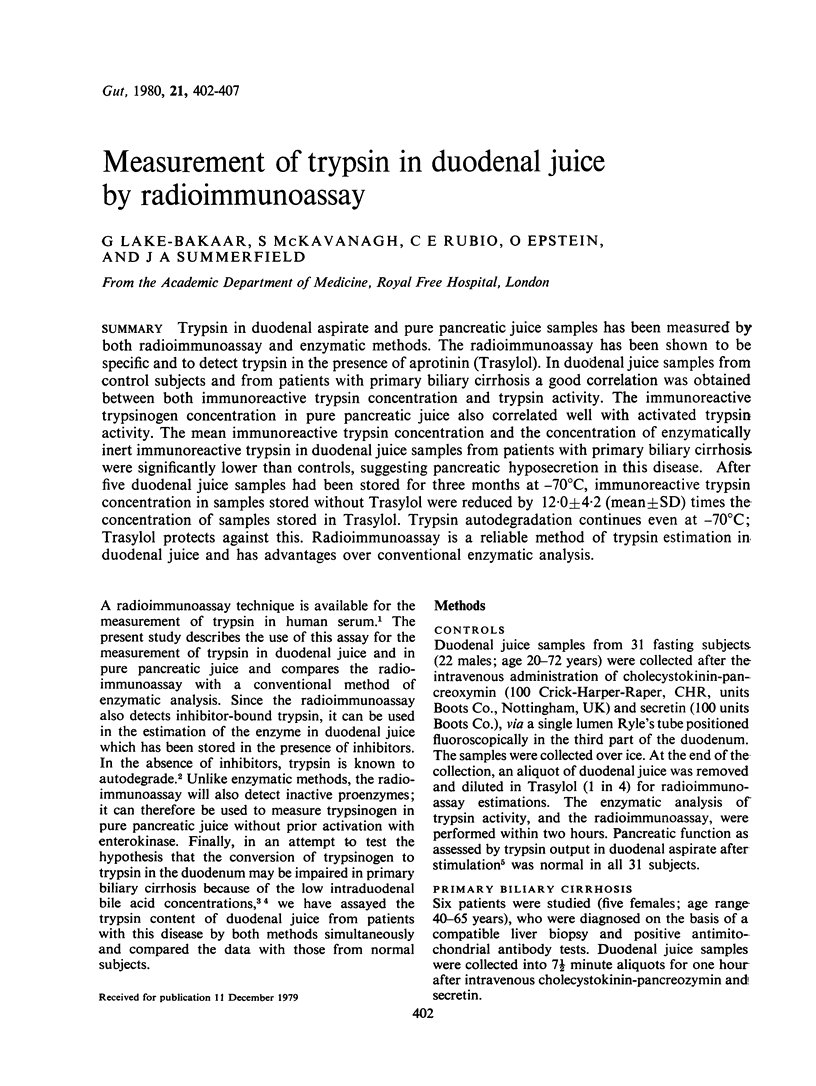
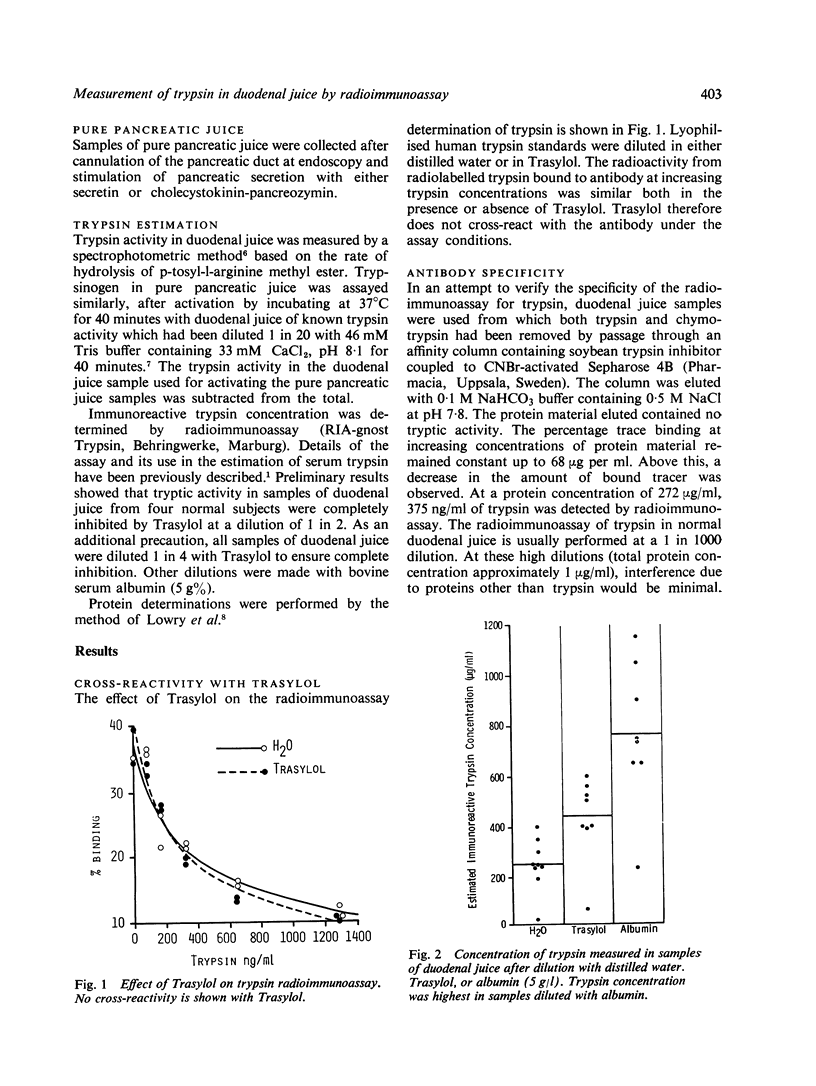
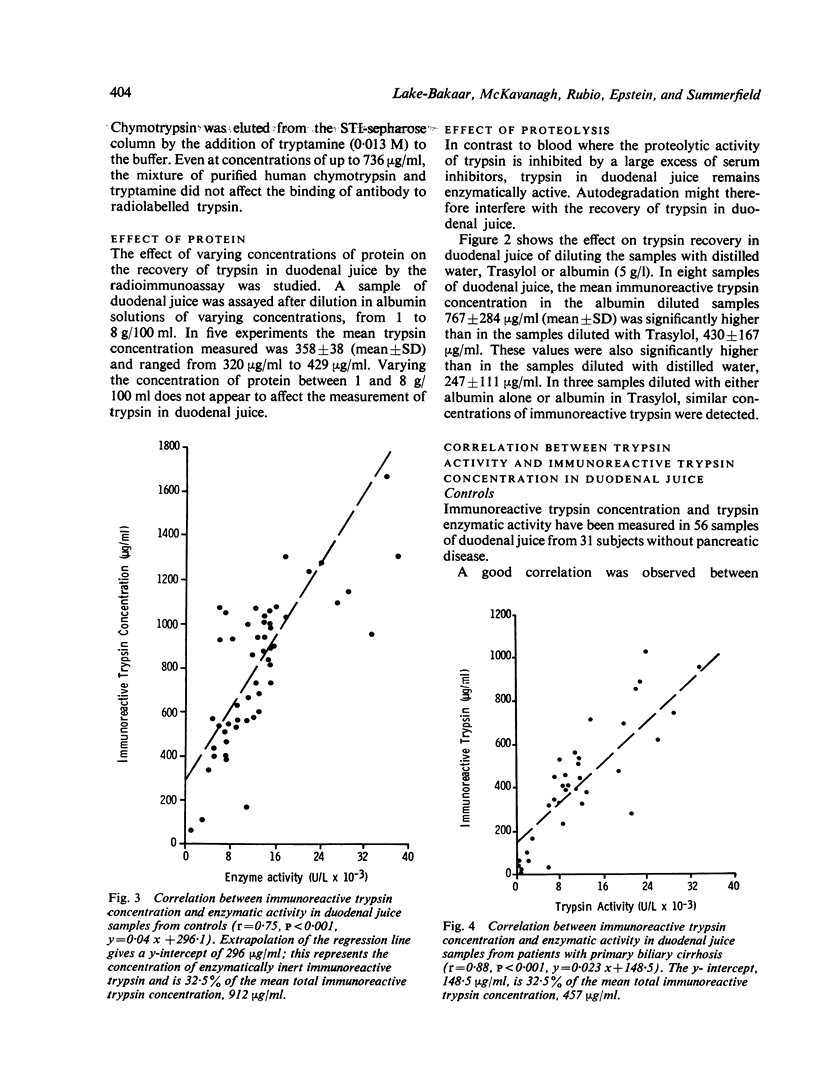
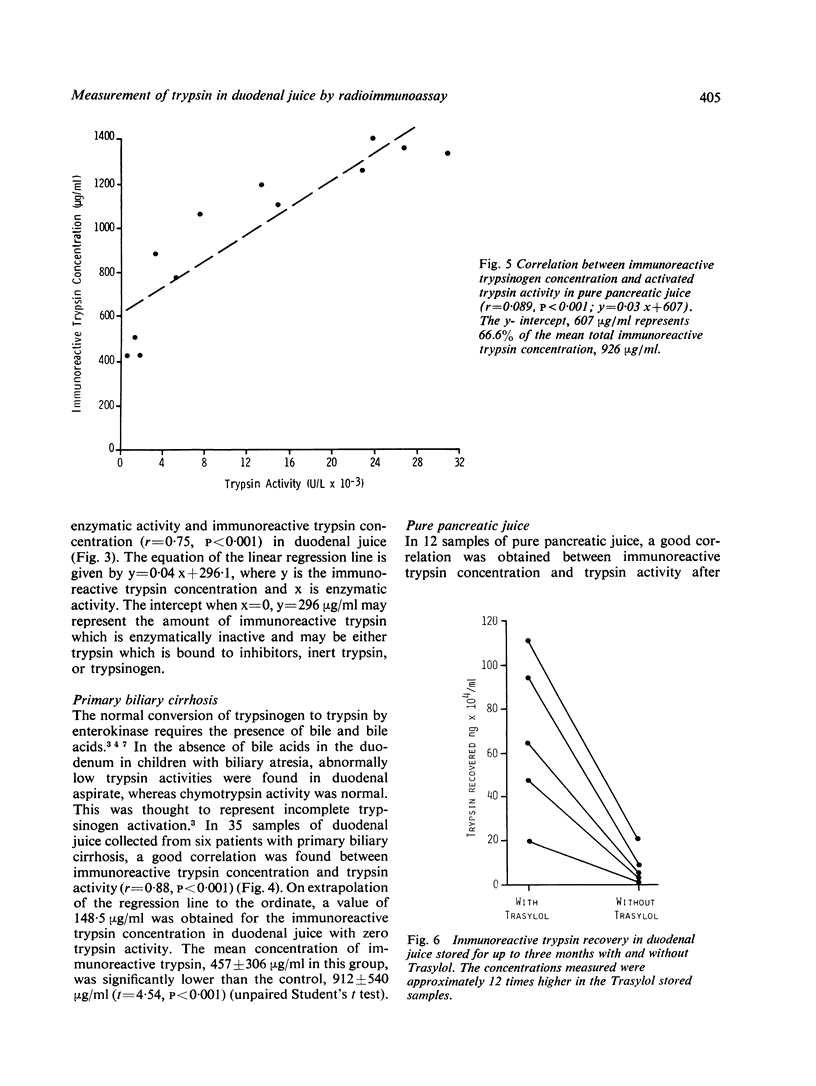
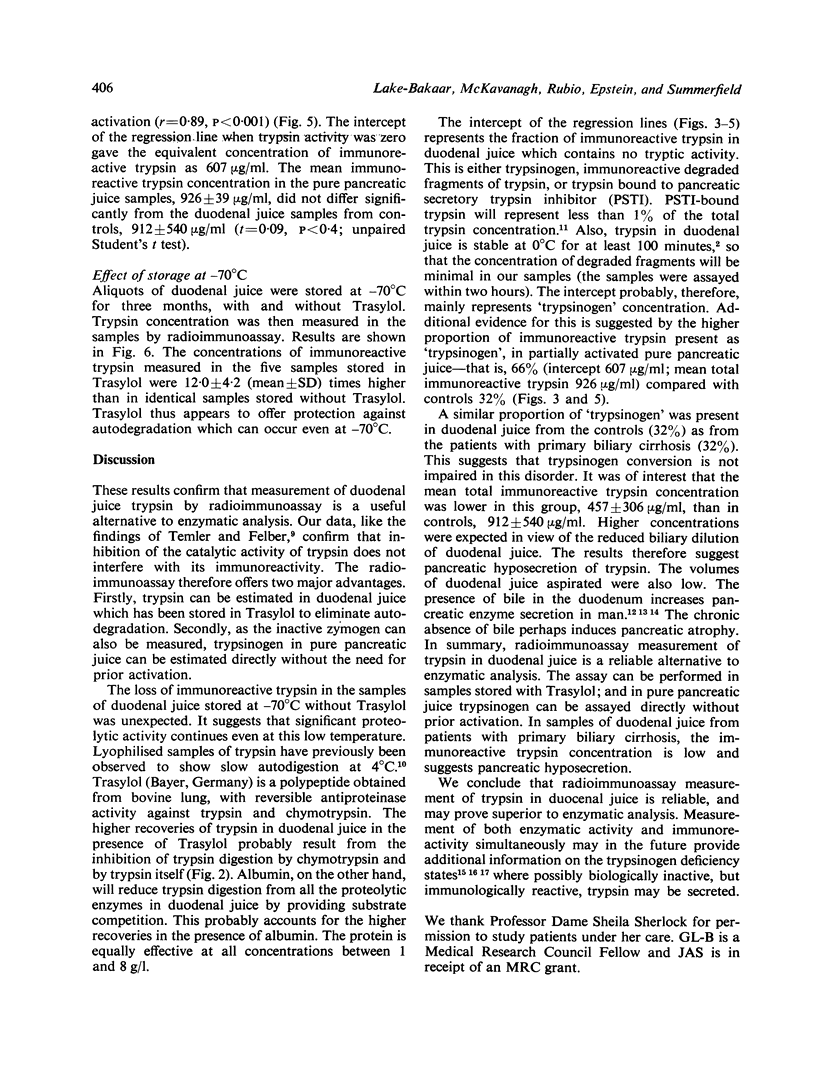
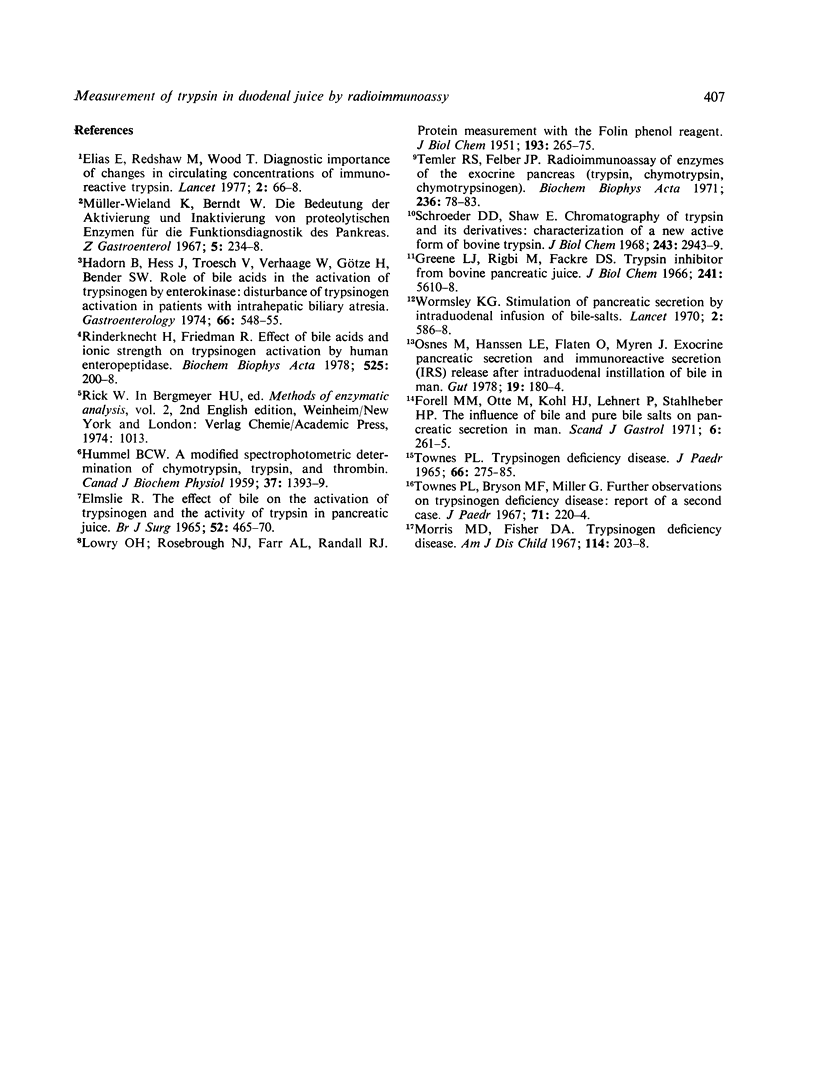
Selected References
These references are in PubMed. This may not be the complete list of references from this article.
- ELMSLIE R. THE EFFECT OF BILE ON THE ACTIVATION OF TRYPSINOGEN AND THE ACTIVITY OF TRYPSIN IN PANCREATIC JUICE. Br J Surg. 1965 Jun;52:465–470. doi: 10.1002/bjs.1800520615. [DOI] [PubMed] [Google Scholar]
- Elias E., Redshaw M., Wood T. Diagnostic importance of changes in circulating concentrations of immunoreactive trypsin. Lancet. 1977 Jul 9;2(8028):66–68. doi: 10.1016/s0140-6736(77)90066-6. [DOI] [PubMed] [Google Scholar]
- Forell M. M., Otte M., Kohl H. J., Lehnert P., Stahlheber H. P. The influence of bile and pure bile salts on pancreatic secretion in man. Scand J Gastroenterol. 1971;6(3):261–265. doi: 10.3109/00365527109180705. [DOI] [PubMed] [Google Scholar]
- Greene L. J., Rigbi M., Fackre D. S. Trypsin inhibitor from bovine pancreatic juice. J Biol Chem. 1966 Dec 10;241(23):5610–5618. [PubMed] [Google Scholar]
- HUMMEL B. C. A modified spectrophotometric determination of chymotrypsin, trypsin, and thrombin. Can J Biochem Physiol. 1959 Dec;37:1393–1399. [PubMed] [Google Scholar]
- Hadorn B., Hess J., Troesch V., Verhaage W., Götze H., Bender S. W. Role of bile acids in the activation of trypsinogen by enterokinase: disturbance of trypsinogen activation in patients with intrahepatic biliary atresia. Gastroenterology. 1974 Apr;66(4):548–555. [PubMed] [Google Scholar]
- LOWRY O. H., ROSEBROUGH N. J., FARR A. L., RANDALL R. J. Protein measurement with the Folin phenol reagent. J Biol Chem. 1951 Nov;193(1):265–275. [PubMed] [Google Scholar]
- Morris M. D., Fisher D. A. Trypsinogen deficiency disease. Am J Dis Child. 1967 Aug;114(2):203–208. doi: 10.1001/archpedi.1967.02090230133019. [DOI] [PubMed] [Google Scholar]
- Osnes M., Hanssen L. E., Flaten O., Myren J. Exocrine pancreatic secretion and immunoreactive secretin (IRS) release after intraduodenal instillation of bile in man. Gut. 1978 Mar;19(3):180–184. doi: 10.1136/gut.19.3.180. [DOI] [PMC free article] [PubMed] [Google Scholar]
- Rinderknecht H., Friedman R. Effect of bile acids and ionic strength on trypsinogen activation by human enteropeptidase. Biochim Biophys Acta. 1978 Jul 7;525(1):200–208. doi: 10.1016/0005-2744(78)90215-2. [DOI] [PubMed] [Google Scholar]
- Schroeder D. D., Shaw E. Chromatography of trypsin and its derivatives. Characterization of a new active form of bovine trypsin. J Biol Chem. 1968 Jun 10;243(11):2943–2949. [PubMed] [Google Scholar]
- TOWNES P. L. TRYPSINOGEN DEFICIENCY DISEASE. J Pediatr. 1965 Feb;66:275–285. doi: 10.1016/s0022-3476(65)80184-6. [DOI] [PubMed] [Google Scholar]
- Temler R. S., Felber J. P. Radioimmunoassay of enzymes of the exocrine pancreas (trypsin, chymotrypsin, chymotrypsinogen). Biochim Biophys Acta. 1971 Apr 27;236(1):78–83. doi: 10.1016/0005-2795(71)90152-8. [DOI] [PubMed] [Google Scholar]
- Wormsley K. G. Stimulation of pancreatic secretion by intraduodenal infusion of bile-salts. Lancet. 1970 Sep 19;2(7673):586–588. doi: 10.1016/s0140-6736(70)90167-4. [DOI] [PubMed] [Google Scholar]


